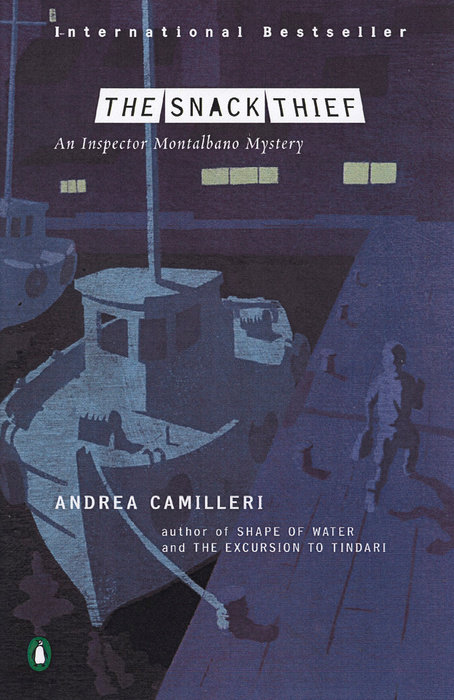rclayton (e)k Andrea Camilleri(r)en The Snack Thief liburuaren kritika egin du (An Inspector Montalbano Mystery, #3)
The Snack Thief
A Tunisian reporter is machine-gunned at sea, and a retired Sicilian is knifed in an elevator. Inspector Montalbano avoids the first case and investigates the second, but eventually finds the threads from his case weave through the other case.
Camilleri was apparently still finding his way around his characters in the story, the third in the series. The plot is good, complex and integrated yet clear, but overlaid with fussy, scene-setting business. Montalbano is particularly assholish: hair trigger, jealous and moralistic. His northern-Italian girlfriend Livia has a role in the story, and is also burdened with outlining the contours of her and Montalbano’s relationship; Montalbano chips in by writing her a letter explaining how he sees things. And, for some reason, Montalbano has a dying father to contend with. Camilleri is wandering around a lot in the telling. This story also signals the commissioner’s retirement, which is doubly unfortunate. The …
A Tunisian reporter is machine-gunned at sea, and a retired Sicilian is knifed in an elevator. Inspector Montalbano avoids the first case and investigates the second, but eventually finds the threads from his case weave through the other case.
Camilleri was apparently still finding his way around his characters in the story, the third in the series. The plot is good, complex and integrated yet clear, but overlaid with fussy, scene-setting business. Montalbano is particularly assholish: hair trigger, jealous and moralistic. His northern-Italian girlfriend Livia has a role in the story, and is also burdened with outlining the contours of her and Montalbano’s relationship; Montalbano chips in by writing her a letter explaining how he sees things. And, for some reason, Montalbano has a dying father to contend with. Camilleri is wandering around a lot in the telling. This story also signals the commissioner’s retirement, which is doubly unfortunate. The relation between Montalbano and the commissioner was a warm and humane part of the first three stories, a respite from frenetic aggression otherwise in play. In subsequent stories Montalbano’s relation with the new commissioner is buffoonish and ridiculous. On the positive side, Catarella is still a background character, his shtick not yet developed and hardened into the annoyance it will become in later stories.

